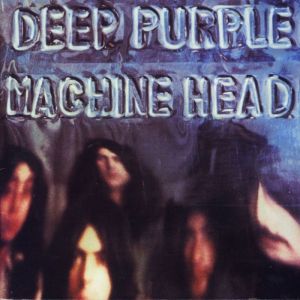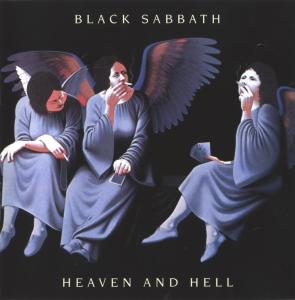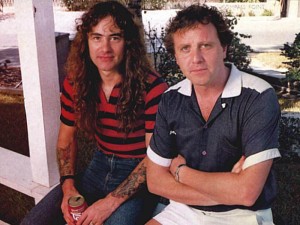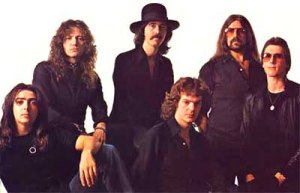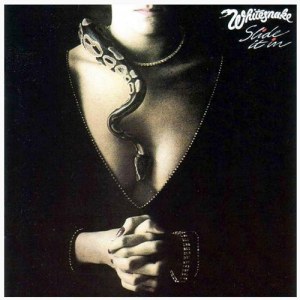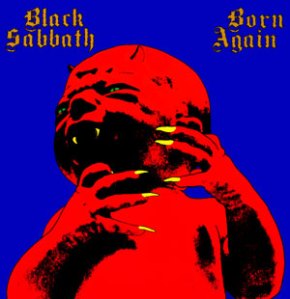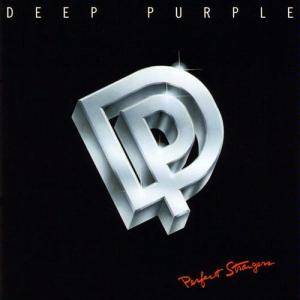
Of the three major offshoots that emerged after the break-up of Deep Purple in 1976, Gillan (the band, not the man) was certainly the most musically daring. And Gillan’s most daring album just might be their last: 1982’s ‘Magic’. Yes, the keyboard-heavy record carries a glossy, polished sheen; yes, it contains a pair of obvious stabs into ‘hit single’ territory; and yes, the off-the-rails kinetic chemistry of the Torme years is largely absent. But it’s not the music that makes makes ‘Magic’ Gillan’s most fascinating record; it’s the words. Truth be told, ‘Magic’ could and should be looked at in hindsight as a concept album, as the lyrics throughout revolve around a common theme: Gillan (the man, not the band) was laying out his future plans right before our very eyes, misdirecting our attention with another album’s worth of musical hocus pocus while planning the greatest magic trick of all: making himself disappear.
Some context: After leaving Deep Purple in June of 1973, Ian Gillan spent a few years away from the music biz, eventually launching The Ian Gillan Band, who released 3 albums of what can only be called jazz-rock, to limited success. Gillan scrapped the IGB but retained keyboardist Colin Towns, whom the vocalist regarded as a valuable writing partner. The pair re-emerged in 1978 with a new band, re-christened simply ‘Gillan’, and a self-titled album, released only in Japan. Perhaps sensing the coming NWOBHM, Gillan, Towns and bassist John McCoy revamped the band’s line-up to include guitarist Bernie Torme and drummer Mick Underwood, heading in a much harder-rocking direction. This bunch released three UK Top Twenty albums (including a #2 & #3) before Torme left; enter Janick Gers, and two more UK Top Twenty records. Add to that six UK Top Forty singles, and you’ve got one heckuva four-year run.
In Britain, during the NWOBHM, Deep Purple’s offspring: Gillan, Whitesnake and Rainbow, dominated the UK Heavy Rock scene. But the first whispers of a Deep Purple Mk II reunion began to circulate in early 1982, as the NWOBHM fire began to fade, and probably caused the five members of DP’s classic line-up to pause and reassess. Ritchie Blackmore seemed content, having found his pot of gold at the American end of his Rainbow, and bassist Roger Glover was a key factor in the band’s US success. Whitesnake, which then included Jon Lord and Ian Paice, were on the verge of implosion, as David Coverdale began retooling the band in an attempt to replicate Rainbow’s success in the US. Paice bolted; Lord stayed. Gillan’s response to the MK II reunion rumors was hidden in plain sight: within the lyrics of what would be his namesake band’s final album, ‘Magic’.

A quick look at the track listing reveals a lot: Titles like ‘Caught In A Trap’, ‘Long Gone’, ‘Living A Lie’ imply a theme; non-album tracks used as b-sides and giveaways such as ‘Breaking Chains’ and ‘Purple Sky’ continue that theme. Even on the surface, we find an indication as to where Gillan’s mind was at during the process of putting together the ‘Magic’ album. Delving deeper, and looking at the lyrics to these songs, and several others on the album, allows an even deeper insight. The concepts IG was working with here center around themes of entrapment, escape, and rebirth… as well as deceit. The lyrics on ‘Magic’ paint a picture of one trapped in an undesirable circumstance, while covertly working toward a more favorable situation. Which is pretty much exactly what occurred while Gillan maneuvered himself into position for a DP reunion.
‘Magic’s lyrics contain ample evidence that, by the time that the lyricist put pen to paper, Ian Gillan had already made his mind up to end the band. Of the twelve original tracks recorded (several covers were also recorded, though only one made the album), eight of them contain hints and clues about Gillan’s mindset and the band’s imminent demise. Some of these red flags are woven into the material with great subtlety; others are startlingly direct. These weren’t just lyrics; they were a letter of resignation. Gillan’s work on ‘Magic’ is akin to a that of a master criminal who intentionally litters his crime scene with tantalizing clues and dares us to put the pieces together, before it’s too late… Or how about Gillan the Escape Artist; stunning his audience by extricating himself from certain doom with seconds to spare, through mystifying means that could only be described as ‘Magic’.
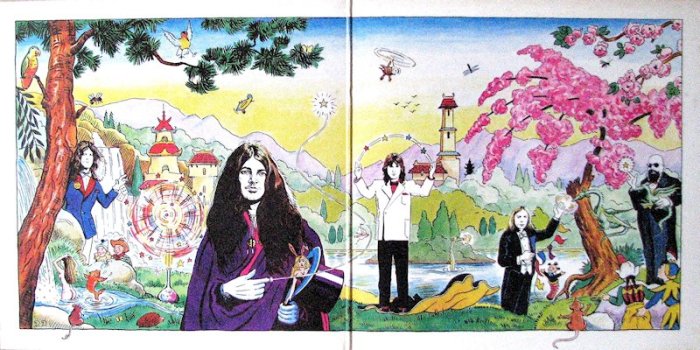
Entrapment/Escape, Rebirth
Some additional context: After a few albums and an extensive amount of touring, the members of Gillan became concerned at their lack of financial success (see: Bernie Torme’s exit), and Ian himself has stated that the band were badly in debt by 1982. Gillan had financed the band entirely with his own money, and by around this time, the Gillan band was deeply in debt. A reunion of the classic Purple line-up just might do the trick…
This snippet from the b-side ‘Breaking Chains’ contains several hints of Gillan’s financial woes:
Ten years of hard sweat, I’m sitting here with a mess of bad debt
I’m down, flat broke, sitting here and you know it’s no joke
I ain’t tired, I ain’t dead, going crazy getting out of my bed, here we go, got another show
Hot dog, cool bitch, feels good but you will not get rich, here we go, got another show
‘Chains’ also speaks to Gillan’s imminent freedom:
How can I be so sad? I gave everything I had
Now that I’m free again, I’m strong and I’m breaking chains
Here’s the dream that I’ve been searching for, I know ’cause I’ve been here before
‘Here’s the dream – I’ve been here before’ is a reference to his previous tenure in DP and the potential upcoming reunion.
The chorus to ‘Caught in a Trap’ also shows Gillan looking forward to revisiting his past in the future (!) but feeling stuck:
In a gateway, I’m trapped in a gateway, Look where I’m going, look where I’ve come from
I’m caught in a trap
‘Long Gone’ has many surprisingly overt references to Gillan’s as-yet-unknown decision to end the band. Musically, this song was an obvious choice for one of the album’s singles, although with these lyrics on top, the choice was a bold one; here IG unflinchingly reveals that his decision is made: He’s gone, long gone:
Say what you’re going to say. I’ll never turn you away but you’ll never make me stay
I’ll come back when the trees stop growing, I’ll come back when the tide stops flowing
I’ll look around when there’s no complaining, I will not return
Send love to the old ways, love to the city haze, I’m gone, long gone
The album’s magnum opus, ‘Demon Driver, contains the following:
I’m trapped here in this tomb, Hell fire here in this womb, this earth
‘Driver’ also includes many uptempo sections that utilize the concept of driving as a metaphor for escape:
Goodbye habit, boring Sunday, Monday slow death
Hello freedom, faster freeways, clean air sweet breath
The album outtake ‘Purple Sky’ is another hidden-in-plain-sight clue about Gillan’s future plans. The was kept off the album, and was not used as a b-side, but rather it was relegated to a flexi-disc and given away free with the purchase of an issue of Flexipop magazine. This excellent song would have been a stellar addition to the album’s track list, but perhaps the title/chorus was too much of a giveaway? The song opens with the line:
‘My old lady, have a lot of fun, when she look the other way, I begin to run’
The first proper verse leads right into the chorus like this:
When I’m cruising you know I’m confusing my head When I’m choosing there’s no one that I want instead
Purple sky, get me by, purple sky get me high, get me high, free and high, purple sky
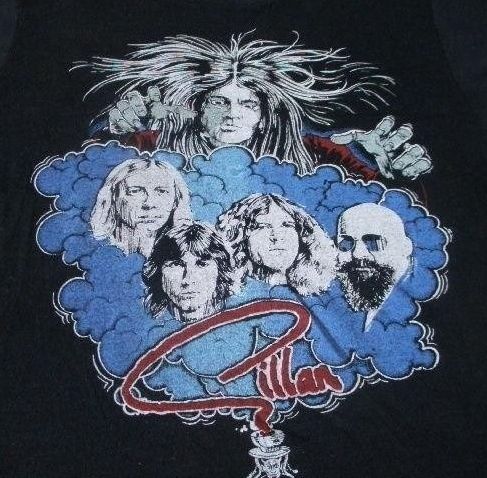
Deceit
Gillan began work on the Magic album in July of 1982, and the album/tour cycle lasted until the band’s final performance in December; Gillan’s lyrics had to have been completed during the July/August recording sessions, at the very latest. That means that IG kept his plans to end the band a secret for six whole months…
‘Bluesy Blue Sea’ is about a man about to embark on a journey, as he prays to the sea that he will get to his destination. He suspects that his departure will upset those he left behind who are as yet unaware of his decision, but feels he must stay true to himself despite the fallout and hopes that they will understand the reasons behind his leaving:
Sitting here with the bottom line, you wanna know what, I’m gonna take my time
It may be good but it could be bad it drives me mad
Looking deep in my moody eyes, feeling good well I got a big surprise
Lock me up if I’ve done you wrong, you’ll never sing my song
Got a dream in December days, I can’t reach it but I’m gonna change my ways
Forget the wind and forget the now, you gotta let me go
Sitting here like a lunatic, you wanna know what and don’t it make you sick
Yes I may be right I may be wrong, but you can’t sing my song
Bluesy Blue Sea won’t you favor me
In ‘Driving me Wild’, Gillan outlines another reason he had privately decided to move on:
What can you do when you stay is your soft and easy life, when ambition is burning to make a break?
What can I do? Lost in a haze, telling you how but I’m just in a daze
That ‘telling you how‘ bit could be seen as a bold admission that the truth is here if one cares to look.
‘Long Gone’ offers more hints at the covert nature of Gillan’s decision throughout the creative process of the album, in the two cryptic instances of ‘it’s not what you think’:
Long gone, out of this place, long gone, it’s not what you think
Long gone, don’t want a new face, long gone it’s not what you think
‘Living a Lie’ appears on the surface to be about a person who has fallen out of love with their partner, yet remains in the unhealthy relationship. In the context of the rest of the lyrics on the album, it’s all too easy to understand that Gillan is actually relating his feelings about his relationship with his band. The middle eight section reads as follows:
Going down going down, down to deceive, coming round, around I believe
Lay me down, lay me down I can’t breathe, I’m living a lie
This line is sung three different times in the song over a solemn, church like organ riff, and is quite striking in its stark declaration:
It’s just another lie
The song ends with this line, softly spoken and drenched with reverb, over the same quietly somber organ backing… feeling more like a confession than a song lyric.
And finally, ‘Demon Driver’, includes this ominous admission:
Look past my eyes, you’ll be surprised
Inside this civilized master, there lies a human disaster
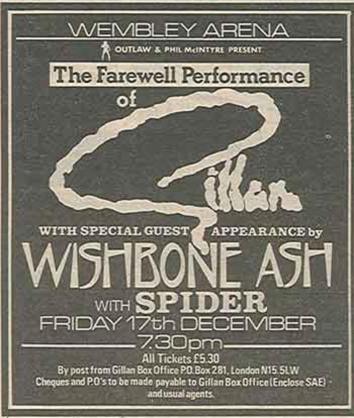
In May of 2020, an unreleased outtake from the ‘Magic’ sessions called ‘Reunion’ was leaked to YouTube. The file is degraded, obviously ripped from an old cassette, but it’s clear that the recording of the song itself was complete, including double-tracked lead vocals, a Gers guitar solo and a fade-out to the end the tune. Musically it’s quite ‘pop’, in the ‘Long Gone’ vein, but lyrically, it’s yet another strong indicator of Gillan’s intentions. Clues can be found among the sonic murk, such as “Ten years on, ten years gone” (Ian left Purple in 1973, and while the DP MkII reunion happened in 1984, it was originally planned for 1983*), and “You’re flyin high, I’m just gettin’ by/We’ll fly in circles ’til we meet again“, which is likely a reference to Ritchie & Rainbow’s recent successes in America vs Gillan’s lack thereof. Oh, yeah— and the song title itself is also a dead giveaway! That’s probably why, although completed in the studio, the song was never released in any form until the leak 38 years later.
Gillan dissolved Gillan the band at the end of the Magic tour, after their final gig at Wembley Arena on December 17, 1982, exactly as foreshadowed in ‘Bluesy Blue Sea’ with that ‘Got a dream in December days’ lyric. Clearly IG had the band’s demise planned right down to the month of the final gig. Claiming the need for throat surgery, Gillan was now free for the Deep Purple Mk II reunion… which was scuttled by Ritchie Blackmore, who opted to one more album/tour cycle with Rainbow*. Gillan now had a year to kill, and so less than two months after his namesake band’s final gig, he was announced as the new lead vocalist of Black Sabbath. The quick turnaround was a shock to the other members of Gillan, leading them to believe they had been *ahem*, misled about the reasons for Gillan’s ending the band. The Sabbath detour turned out to be a one-off, as the fabled Mk II reunion finally became a reality in April of 1984.
The remaining members of Gillan were all quite vocal about their perceived betrayal, expressing their acrimony in the UK music press as well as in songs written about their ex-bandleader’s behaviors and motivations. To hear the band’s impressions of what took place, without the lyrical sleight of hand employed by their former boss, check out John McCoy’s ‘Because You Lied’, a direct response that pulls no punches; McCoy felt so close to the singer that he named Gillan godfather to his first daughter. Colin Towns gave ‘How Does the Cold Wind Cry’ to Roger Daltrey, who recorded the song for his ‘Parting Should be Painless’ collection, a loose concept album inspired by the break-up of The Who. Towns’ song fit into Daltrey’s theme seamlessly; the lyric is a sad and haunting take on his betrayal by someone he had loved and trusted for almost a decade.
So Gillan the Magnificent pulled off quite an amazing trick with ‘Magic’, turning Gillan’s fifth record into a concept album about his breaking up the band right before our eyes… and right under his band’s noses. In retrospect, this IS the same guy who wrote a very unflattering lyric about Ritchie Blackmore over a song on Deep Purple’s ‘Who Do We Think We Are? LP (‘Smooth Dancer’) which went wholly unnoticed by the Man in Black, so his ‘Magic’-al mischief was not without precedent. One wonders if any of the former members of Gillan ever had had an inkling of what was happening, after hearing those lyrics night after night on the road, or perhaps a head-smacking moment years later— “Of course! How could I not have seen it!” But by then, The Amazing Gillan had packed up his travelling Magic show and moved on to Purpler Skies and greener pastures…

